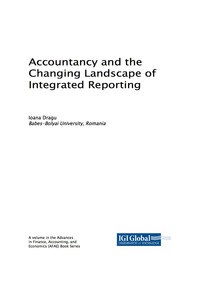Question
As a Senior Accountant in a large accounting firm, you have recently been contacted by the owners of a private start-up company that has grown
As a Senior Accountant in a large accounting firm, you have recently been contacted by the owners of a private start-up company that has grown exponentially and is considering taking the company public.While the owners are proficient in the technical aspects of the business, they are lacking in financial expertise. Before deciding whether to go public, the business owners want to ensure they fully understand the accounting requirements and expectations of running a publicly-traded company and have asked for your expertise.
Response to the business owners to provide an overall assessment of a publicly-traded company's key components and accounting requirements.Consider how the requirements for a publicly-traded company differ from a private company and the changes that will need to be made before a potential initial public offering.
- Compare the significant regulatory agencies affecting financial accounting reporting for publicly-traded companies. Explore the differences in reporting requirements for private and public companies.
- Analyze the critical components of, and the interrelationship between, the four primary financial statements. How does financial data assist managers in better decision-making, planning, and forecasting? Include an assessment on the importance of reporting accurate and financially sound data and the impact on effective decision making.
- Explore the different methods of financial statement analysis and the benefits resulting from financial data analysis. Identify the main categories of ratio analysis and provide specific examples of each ratio style, and their uses within each category. Evaluate how these ratios are used to analyze financial data and impact managerial decision-making.
- Evaluate the characteristics for measuring the effectiveness of investment decisions through capital budgeting. Compare each of the three capital budgeting valuation methods: internal rate of return, net present value, and payback method. Include how each valuation method is used to create the accountability and measurability of a capital budgeting project and the overall effectiveness of decision-making.
- Analyze the traditional costing methods commonly used in business by comparing the methods and the types of business each costing method is best suited for controlling costs. Include an additional analysis on activity-based costing and its relationship to the traditional costing methods and the advantages to managerial decision making.
- Explore the relationship between effective budgeting and the resulting benefits to business owners and decision-making. Analyze how the essential components required to create the successful budget are used to track and control decision-making effectiveness. Include an analysis of the relationship between standard and actual amounts (variances) and the effect on managerial decision-making and performance.
- Evaluate the critical components of the Sarbanes-Oxley Act and the relationship to managerial responsibility for following and reporting potential ethical violations. Include in the discussion potential risks or ethical dilemmas for a company that does not fully adhere to the Sarbanes-Oxley regulations.
- Evaluate the social responsibility of a company beyond the maximization of profits. Identify regulations a company must follow and policies they may adopt to become more socially responsible. Include the risks or consequences of lacking social responsibility and the potential impact on a company.
Step by Step Solution
There are 3 Steps involved in it
Step: 1

Get Instant Access to Expert-Tailored Solutions
See step-by-step solutions with expert insights and AI powered tools for academic success
Step: 2

Step: 3

Ace Your Homework with AI
Get the answers you need in no time with our AI-driven, step-by-step assistance
Get Started


